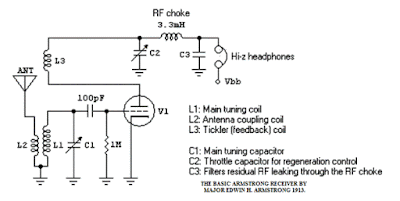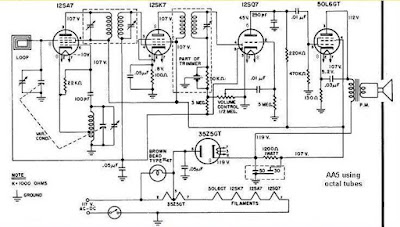3/1/20
Hi tube enthusiasts interested in RF with tubes.
A brief:
-Edison invented the light bulb.
-Fleming of UK imported Edison's bulbs.
-Fleming played with a bulb and placed a second element inside.
-Using batteries, he discovered electrons moved inside the bulb. Eureka! The DIODE!
-Back in the U.S.A., a third element was discovered to control the flow of huge electrons
with TINY currents. EUREKA! THE TRIODE. It was originally called the AUDION.
So, it is CATHODE,GRID,PLATE.
-Electrons moved fast inside the tube, i.e. at high voltage, 45 volts upwards.
Armstrong, American, was first to experiment RF in a tube. He used the basic t
riode as an RF amplifier.
He invented the REGENERATIVE RECEIVER.
Regen circuit
Description. In 1913 Major Edwin H. Armstrong patented a design for the Regenarative Receiver that uses the principle of positive feed-back in amplifiers to demodulate AM, CW, SSB, and FM. Mr. Armstrong's circuit is shown and used the new vacuum tube of the time. The Regenerative receiver has since become the most popular basic receiver for Amateur Radio Operators and Electronics experimenters worldwide. The principle of operation is simple. Positive RF feedback is used to increase the RF gain of the amplifier up to and beyond self-oscillation. With no input RF signal the internal noise peaks and a small bias voltage combine to produce a stable but self-limiting oscillator, except right at the peak of oscillation very high gain is produced and the detector becomes very sensitive to small input RF signals, like those associated with SSB and CW. AM is demodulated just below the point of oscillation, but SSB and CW are demodulated when an RF signal combines with the heterodyne sign...


Following Sir. Thanks..
ReplyDelete